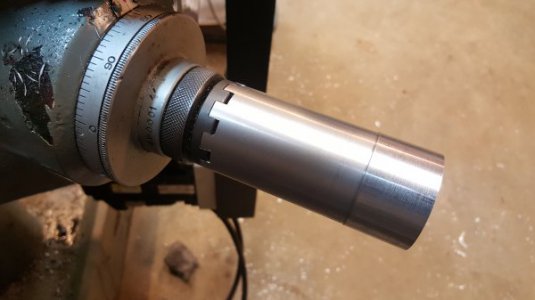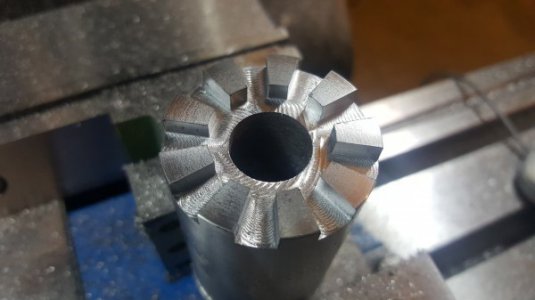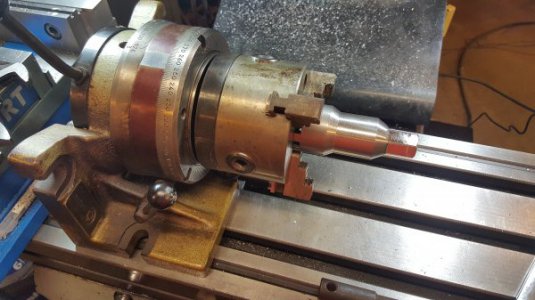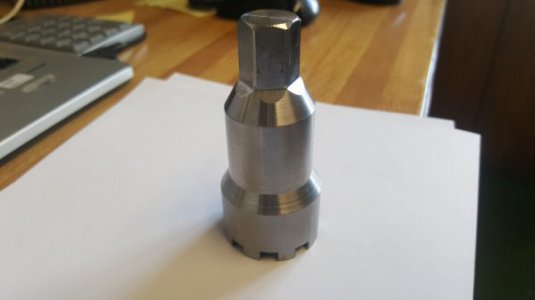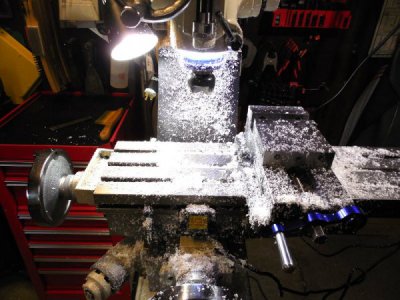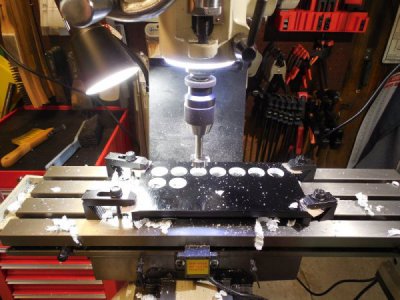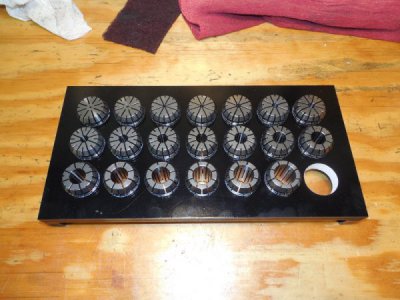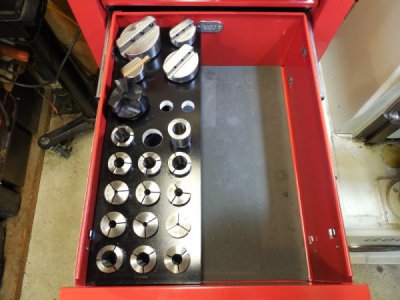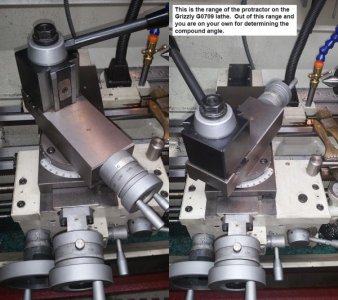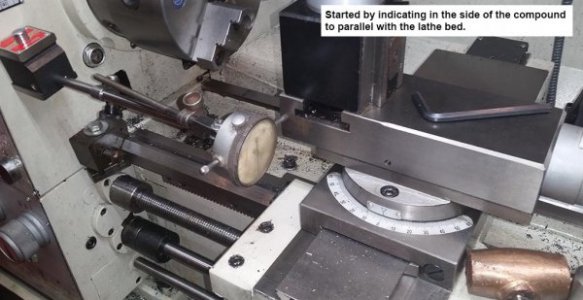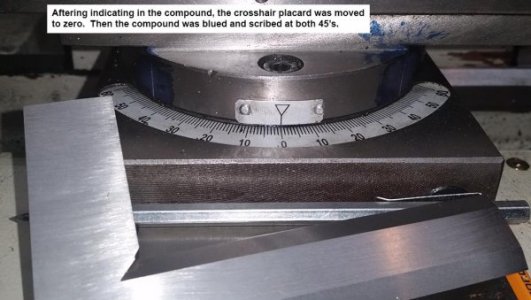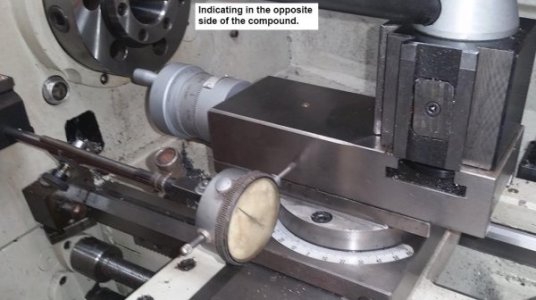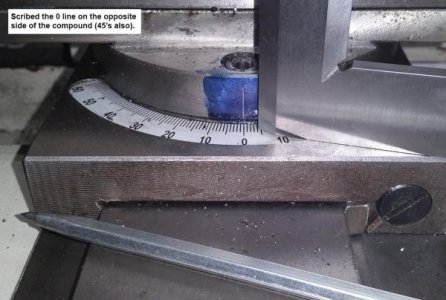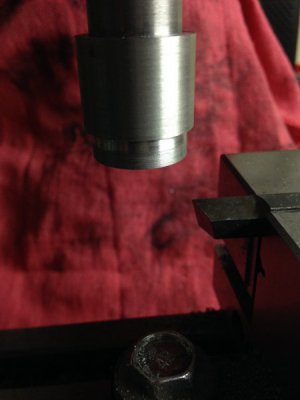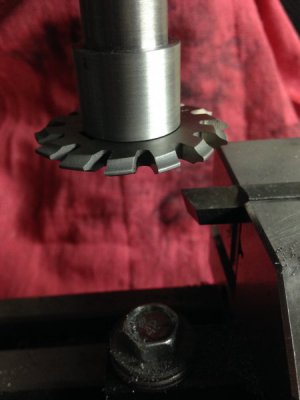A little upgrade for the carriage stop.
With the new proximity stop, I found myself using the cool feature quite a bit but the two 4mm cap screws that secure the stop where a PITA to adjust as they where located under the stop and with the lead screw in the way it made it tricky as the allen wrench would only engage at an angle with small turns, not to mention my knees and neck didn't care for this position.
Mark Jacobs suggested reworking the lock system so we took carful measurements and drilled a hole as close to the edge of the bed way and turn dial. I then took a piece of drill rod and turned a custom bolt with 10-24 threads. The two old cap screw holes where used for guide rods to ensure the locking plate would move evenly up/down. Mark was kind enough to turn these out of 1/4" drill rod. Two small grub screw holes where added to the bottom plate to ensure the clamping would be even once snug. The final process was done at Marks shop as he shared his collet block for this last step in drilling/threading the thimble for a threaded lever made from 1/4" drill rod which he also turned for me.
View attachment 128432
I counter bored the block just a hair over .030 for a flush look.
View attachment 128433
I didn't have a long nose live center, so I used a hardened ground pin (dead center) to support the stock while threading. I utilized Marks method for the threading with proximity stop and leaving the 1/2 nut engaged. This would be the last time I used the stupid cap screws to adjust/secure the carriage stop.
View attachment 128434
The material turned very nice considering I used a rounded triangular insert designed for aggressive cuts.
View attachment 128435
The test fit good. Th thimble portion was kept a bit long to ensure the lever would clear the edge of the carriage.
View attachment 128436
This shot shows the two guide rods threaded where the old cap screws once lived. Smooth even clamping.
View attachment 128437
Installed stop. The two s/s button head allen screws serve as grub screws for adjustment for even clamping (not 100% it needed this) with a 1/4 turn.
View attachment 128438
And finally a swarf guard with a ramp to clear chips into lower pan. Overall a great upgrade for quick and simple adjustments.
Have a great weekend fellas!
Turn and burn!
Paco


